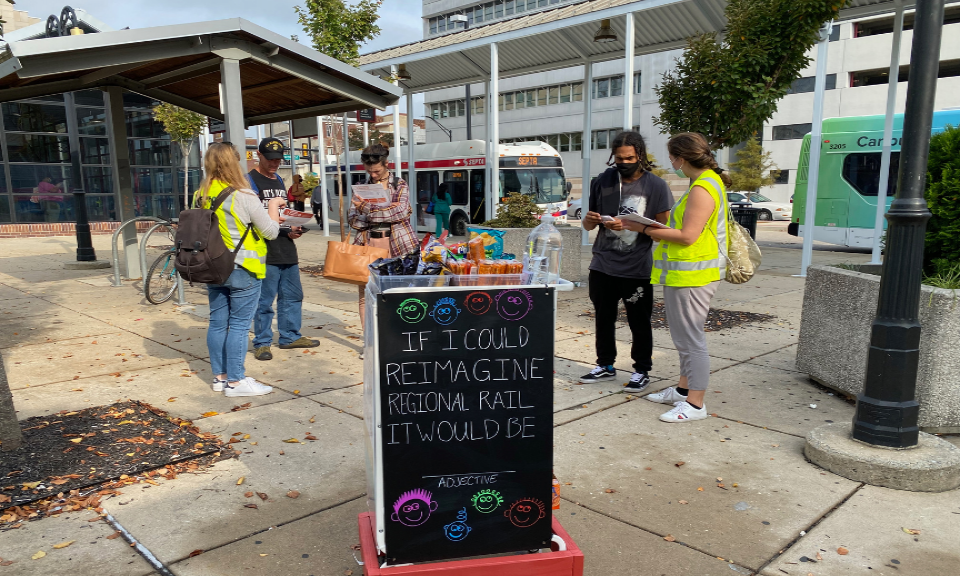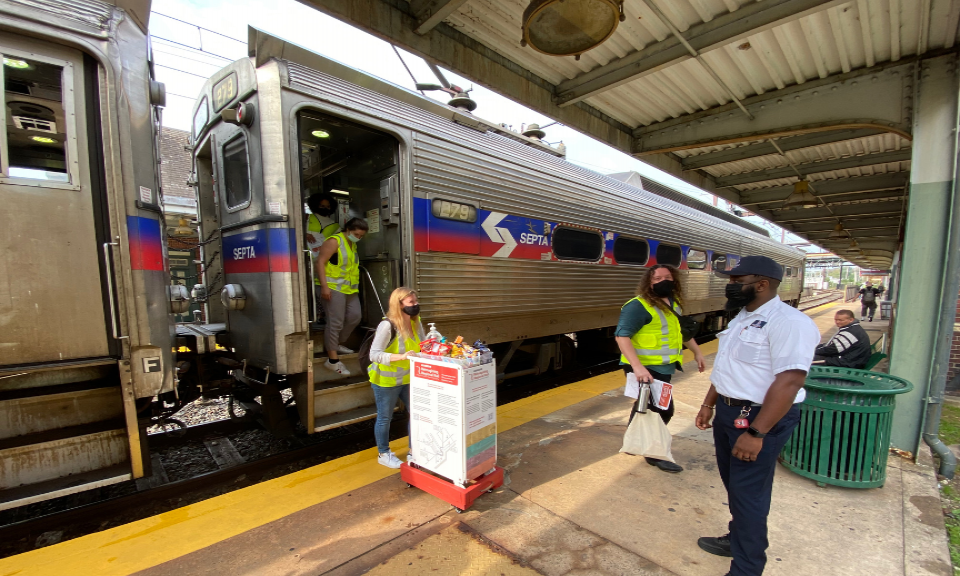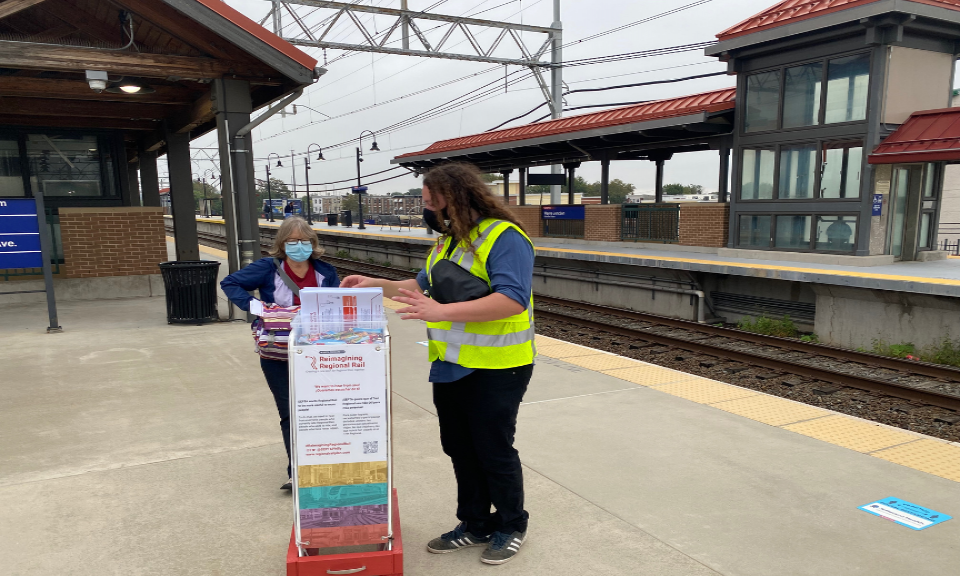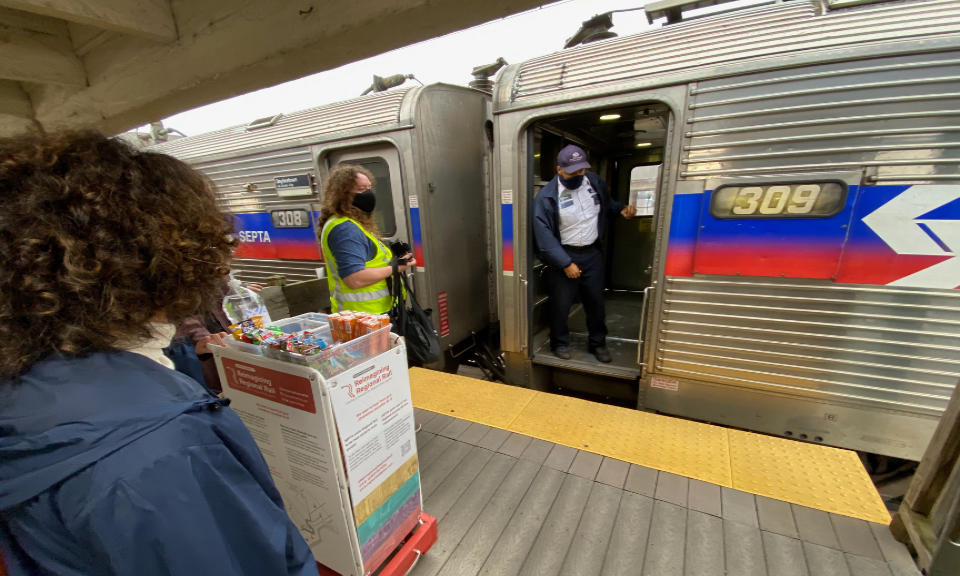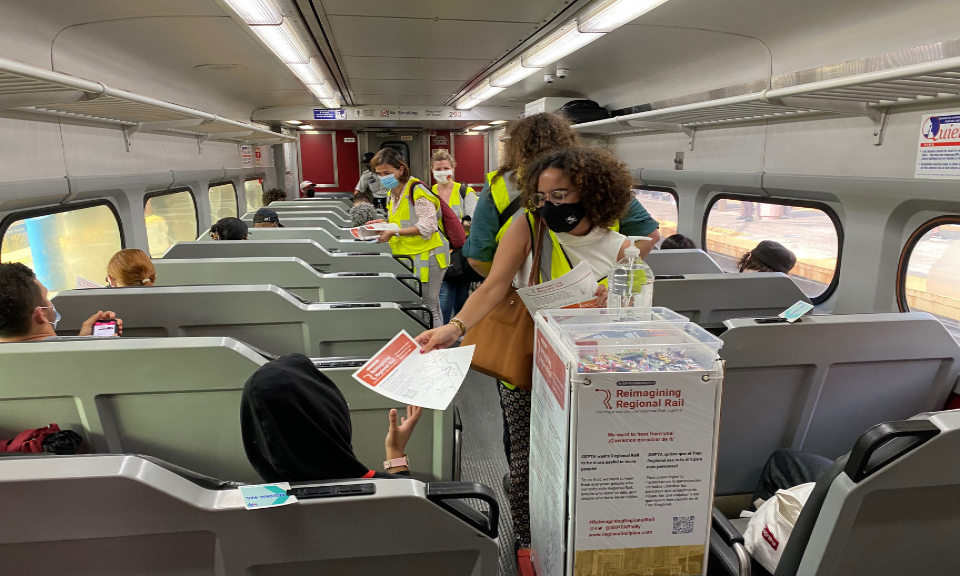Philadelphia’s SEPTA has the best regional rail infrastructure in the country, with 280 miles of electrified line feeding through a quadruple-track downtown tunnel. While it is essential to serve suburban Center City commutes, though, the service on that network doesn’t meet many other needs: shorter trips within the city, reverse commutes, and non-work trips. As part of its strategic goal of creating a “lifestyle” network, the agency asked Huitt-Zollars to lead a “Reimagining Regional Rail” effort to make the network more useful to more people. Everything is on the table: service, infrastructure, equipment, fares, wayfinding, and integration with local transit.
The project has been built around extensive public involvement. In addition to a virtual public meeting and an online survey, the first round of outreach included two days of “popups” where the team took a cart with information, interactive materials, and snacks on a tour of the Regional Rail system, meeting riders where they are and giving people opportunities to meet the team across the region.
Huitt-Zollars created an extensive documentation of existing conditions. This work clearly identified that the system underserves many kinds of trips. In particular, the study shows that, while Regional Rail runs through many dense, low-income neighborhoods both in the City of Philadelphia and in outlying cities, but picks up very little ridership from these areas because of infrequent service, high fares, and lack of integration with local transit. These residents could benefit from a transformation of regional rail service. The study of existing conditions also identified the obstacles to providing this service: junctions and single-track segments that act as bottlenecks, low boarding platforms at stations, old equipment, and places where regional rail misses key transit connections.
Based on this work, Huitt-Zollars designed three scenarios – one focused on increasing service across the region, one focused on creating very frequent service in the core, and one focused on all-day express service – to illustrate possible tradeoffs and show what’s possible. Each of these is being developed with schedules and required infrastructure improvements. These will form the core of the next round of outreach. Based on that feedback, a preferred future plan will be selected and developed in detail, along with a phased implementation.


